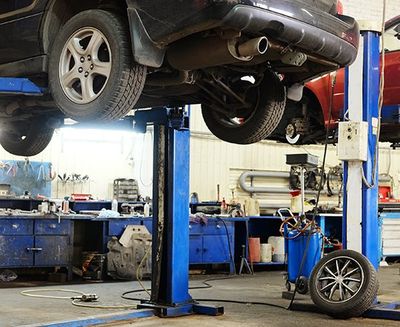Advanced Lift Engineer Course: Prepare for Careers with Leading Lift Repair Companies Near Me
Advanced Lift Engineer Course: Prepare for Careers with Leading Lift Repair Companies Near Me
Blog Article
Necessary Elements to Think About for Lift Upkeep
When it comes to the effective and risk-free procedure of lifts, considering vital upkeep factors is paramount. It is essential for constructing managers and upkeep personnel to stay ahead of these factors to maintain the elevator's performance criteria and compliance needs.
Routine Inspection Schedules

Carrying out regular inspections not just enhances the overall performance of the elevator but additionally plays an essential function in adhering to safety guidelines and sector standards. It ensures that the elevator runs smoothly, decreasing the threat of unforeseen breakdowns that might aggravation occupants or compromise safety. Furthermore, regular examinations add to lengthening the life-span of the lift devices, eventually decreasing upkeep costs and downtime.
To improve the examination process, many building proprietors partner with certified elevator upkeep companies that focus on carrying out comprehensive evaluations and supplying timely upkeep solutions. By prioritizing routine examination routines, stakeholders can support the security, dependability, and performance of their elevator systems.
Appropriate Lubrication Strategies
Efficient lubrication techniques are essential for maintaining the optimal efficiency and durability of elevator components. Appropriate lubrication strategies play a critical duty in preventing deterioration on relocating components, decreasing friction, and guaranteeing smooth operation of the lift system. When it concerns lift upkeep, using the right lubes in the proper amounts at the suggested periods is crucial to preventing expensive fixings and reducing downtime.
To ensure appropriate lubrication, elevator technicians must comply with producer standards relating to the sort of lube to be used for details parts such as bearings, gears, and overview rails - lift engineer course. Over-lubrication can draw in dust and debris, causing element malfunctions, while under-lubrication can create enhanced friction and premature wear. Frequently arranged lubrication maintenance must be included in the total elevator upkeep strategy to maintain the system running successfully and safely
Monitoring Tear and put on
Elevator maintenance employees need to perform routine evaluations to determine indicators of wear on vital components such as ropes, sheaves, guide rails, and bearings. In addition, maintaining thorough maintenance records can assist in tracking the wear patterns of lift components over time, permitting for predictive upkeep preparation. By carefully keeping an eye on wear and tear, maintenance teams can address issues proactively prior to they intensify into expensive repair work or unexpected downtime, ensuring the risk-free and efficient procedure of the lift system.

Safety And Security Conformity Checks
Carrying out complete security conformity checks is essential in ensuring the elevator system meets all functional requirements and governing standards. These checks also involve verifying that the elevator's capacity restrictions, rate, and emergency situation communication systems are in line with safety and security requirements. Furthermore, adherence to safety and security conformity checks can protect against accidents, reduce responsibility risks for structure proprietors, and expand the life-span of the elevator system.
Emergency Situation Feedback Preparation
In light of the important relevance of security conformity checks in keeping lift systems, a durable Related Site emergency situation reaction planning technique is critical to swiftly and successfully address unanticipated incidents. lift engineer course. Emergency response planning for elevators entails positive procedures to make certain the safety and security of travelers and upkeep personnel in the event of emergencies such as power interruptions, entrapments, or mechanical failures
Secret components of an effective emergency action plan consist of establishing clear communication protocols, supplying routine training to staff on emergency procedures, keeping updated emergency get in touch with checklists, and carrying out regular drills to exercise feedback actions. Additionally, it is vital to have actually marked workers accountable for working with emergency situation reactions and guaranteeing that required tools, such as emergency lights and interaction devices, remain in working order.
Final Thought
To conclude, it is vital to prioritize regular inspection routines, appropriate lubrication methods, keeping track of wear and tear, safety conformity checks, and emergency response preparation for lift upkeep. By applying these important aspects, building proprietors can ensure the safety and effectiveness of their lifts, inevitably minimizing the risk of crashes and breakdowns. Regular upkeep techniques are crucial for extending the life-span of elevators and guaranteeing the wellness of people who depend on them for transportation.
Regularly arranged lubrication maintenance need to be included in the general elevator upkeep plan to maintain the system running efficiently and securely.
Lift maintenance workers need to perform regular examinations to identify indicators of wear on key components such as ropes, sheaves, guide rails, and bearings. In addition, maintaining comprehensive maintenance records can aid in tracking the wear patterns of lift parts over time, Extra resources enabling for predictive upkeep preparation. By very closely checking wear and tear, maintenance teams can address concerns proactively before they escalate into pricey fixings or unexpected downtime, making certain the reliable and risk-free procedure of the elevator system.

Report this page